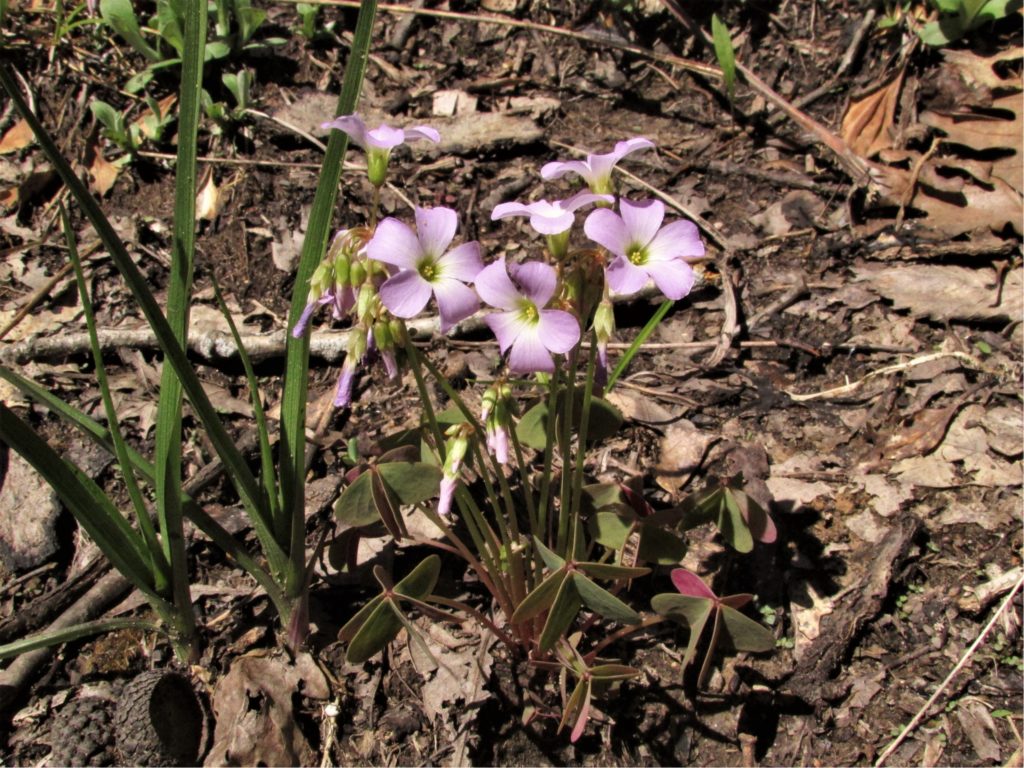Plant Profile: Violet Wood Sorrel [Oxalis violacea]
The Chicago Botanic Garden contacted me again this spring about collecting seed for their SOS [Seeds of Success] seed-banking program. I had done so some 5 years ago.
One of my first collections was Oxalis violacea, a fairly common plant in our woodlands and barrens communities. When the sun shines, it is very showy with its bright pink flowers. With cool, wet conditions and cloud cover, the flowers close up tight, making for an amazing disappearing act. Of course, the flowers are there for the benefit of pollinators and not idle human visitors. Each of the widely spaced plants on the woodland slopes is like a mini bouquet of shamrock foliage and pink flowers. They would grace any rock garden, taking their place with all the better-known bulb species.

However, as the flowers mature into seed capsules over a rather extended period of time, the plants seem to ‘disappear’. Ever taller vegetation obscures the rapidly senescing foliage as spring advances. Capsules in each umbel ripen in sequence at different times. When ripe, they explosively discharge their seeds. So, when collecting, you miss some seed and others may not be quite ripe. Yes, Oxalis violacea seed collection is a bit of a challenge and lags much behind that of many other species.
The saga does not end here. For decades, in my native seed garden, I have grown a population that disappointed with its lack of flowering. Still, the patch kept getting larger, forming a lawn-like groundcover of rather low, small foliage. The foliage is colored much darker, with deep purple undersides and is retained for 4-6 weeks longer (through the end of June) than the heavily flowering solitary barrens type. The origin of these carpet-form plants is a bit of a mystery. I had encountered this form a few years ago across the road from the Litchfield Route 66 Prairie. Perhaps my plants had come from this location, once a thriving, diverse prairie remnant.
Last year I saw the carpet-form in the Horn Prairie Grove near Ramsey. Keith Horn had called my attention to the plants, as they seemed so different from the descriptions in botany manuals. He shared 4 corms with me and I potted them. All flowered this year, though much later than the solitary barrens type. No seed set, probably because all the plants are genetically identical. In mid-June, satellite plants showed up 3” away. I checked my old stand, carefully lifting a plug of plants. The older dark corms had made threadlike extensions that ended in new scaly white corms, only a few millimeters in size.
I had mentioned these profound differences in response to a posting about Oxalis violacea at https://www.facebook.com/groups/illinoisbotany. Dr. Dennis Nyberg from the Chicago area responded with a similar observation from his area. None of the botany manuals that I checked mentions the existence of such different ecotypes.
Diversity at all levels is important and increasingly relies on the few remaining bits of our great natural heritage here in Illinois. ‘Stalking the Violet Wood Sorrel’ may not rise to the same level of excitement as ‘Searching for the City of the Monkey God’ or ‘Hunting Lions and Leopards’. Still, it may resonate with a few of us ‘plant nuts’ and get additional attention and research.

